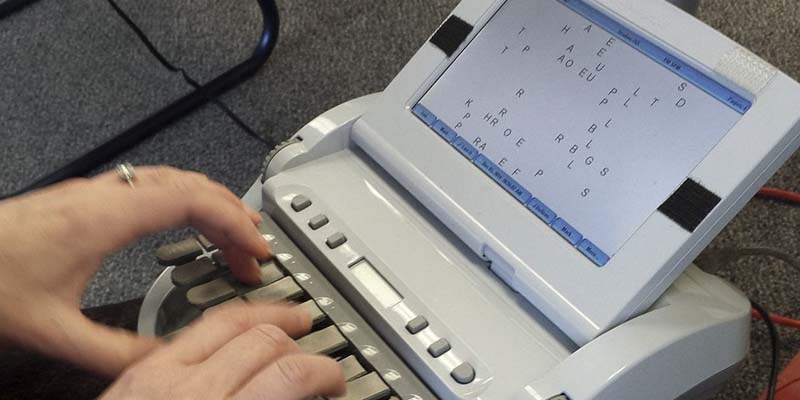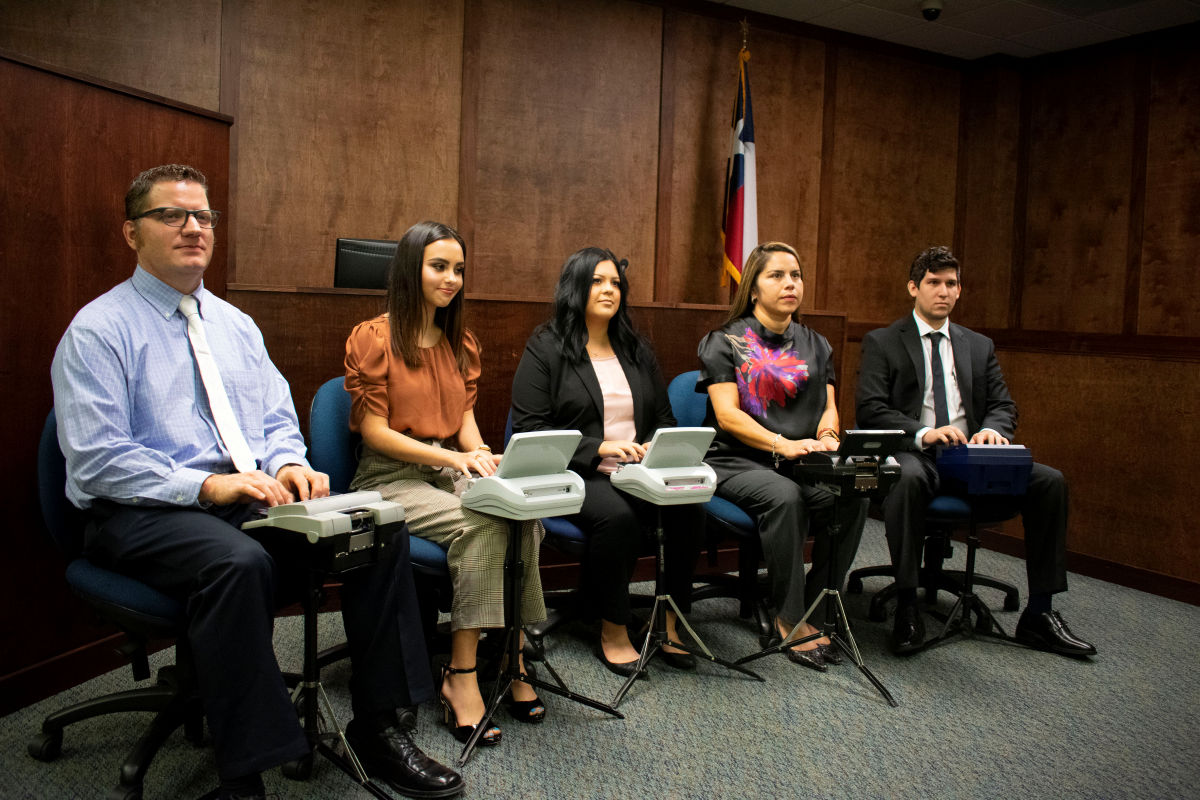How Court Reporting Functions: A Step-by-Step Guide to the Legal Process
Court reporting is a vital part of the legal system. It includes a structured process that assures exact documents of procedures. From preparation to the final delivery of transcripts, each action is important. Comprehending exactly how court reporters run deals insight into the honesty of lawful records. The nuances of their job can profoundly affect lawful results, prompting concerns about the approaches and modern technologies they employ. What are the particular strategies that specify this profession?
The Function of Court Reporters in the Legal System
Court reporters play a necessary function in the lawful system by providing exact and trustworthy records of court process. Their work assurances that every talked word during hearings, depositions, and trials is documented, which is critical for maintaining an official record of occasions. This transcription is fundamental for appeals, as it permits higher courts to evaluate the proceedings and establish if any kind of errors were made throughout the test.
In addition, stenotype reporter aid in preserving the stability of the legal process by creating verbatim records that can be described by legal representatives, courts, and other events involved in a situation. They commonly use customized equipment and software application to record dialogue with precision. Past the court room, their records can work as essential historical files, using insight right into judicial procedures and the legal system's functioning. Ultimately, court reporters contribute substantially to transparency and accountability in legal issues.
Planning for a Court Reporting Session
Prep work is vital for an effective court reporting session, as it ensures the precision and performance of the transcription process. Stenotype reporter begin by reviewing situation materials, consisting of pleadings and witness listings, to familiarize themselves with the terminology and context. They also make particular that they have the required tools, such as steno devices, note pads, and back-up tools, on-line.
Prior to the session, communication with legal groups is crucial. Press reporters frequently make clear any kind of particular requests regarding format or preferred terms. Furthermore, they may prepare to meet lawyers or witnesses to go over the proceedings and verify the timetable. Arriving early to establish the equipment permits for repairing prospective technical issues. Generally, extensive preparation not just improves the reporter's self-confidence yet likewise adds substantially to generating a clear and exact document of the legal procedures.

Catching the Document: Techniques and Devices
Making use of innovative methods and reputable equipment, court reporters carefully capture the talked word throughout lawful process. They use stenography, an approach including a specialized equipment that allows them to kind several audios concurrently, therefore recording dialogue in real time. This equipment, understood as a steno key-board, is outfitted with secrets that stand for syllables and words, enabling swift and accurate input.
In addition to stenography, stenotype reporter may utilize audio recording devices as additional devices. These gadgets function as backups, making sure that no essential info is shed during proceedings. In addition, some reporters include software that enhances their transcription effectiveness, providing attributes such as voice recognition and automated formatting.
Appropriate positioning and focus are paramount; reporters should keep attention on all audio speakers, recording nuances and inflections that add to the record. Through a mix of skill and innovation, court press reporters promote the integrity of the legal procedure by making sure a comprehensive and accurate document of events.
Recording the Procedures
Recording the process needs court press reporters to convert talked discussion right into composed text with exceptional precision and rate. This process typically occurs quickly after the recording has been captured, using specialized software application that enables seamless transcription. Stenotype reporter need to listen diligently to the sound, ensuring that every time out, inflection, and word is precisely represented in the transcript.
They typically count on shorthand systems, individual transcription skills, and advanced modern technology to promote this task. The setting in which they function can be sometimes chaotic and hectic, as legal process commonly involve several speakers and technological jargon. Court reporters must likewise preserve concentration to capture nuances in tone and context that may be vital for the legal document. Inevitably, the precision of the transcription is crucial, as it works as a main file for future referral in lawful proceedings.
Reviewing and Editing the Records
The process of examining and modifying the records is vital for making sure accuracy in court reporting. Court reporters typically collaborate with attorneys to clear up any type of uncertainties and confirm the correctness of the videotaped statements. This partnership is important for preserving the honesty of the legal record.
Relevance of Precision
Precision functions as the cornerstone of reliable court reporting, as even small errors can greatly modify the significance of lawful process. The examining and modifying process is important in making certain that records show the spoken word with fidelity. Stenotype reporter thoroughly verify names, technological terms, and lawful lingo to maintain accuracy. This focus to detail helps protect against misunderstandings that could impact case outcomes. Precision promotes trust fund amongst lawful experts, clients, and the court, reinforcing the honesty of the judicial system. Mistakes can cause disputes or allures, making it imperative for reporters to improve their work thoroughly. Eventually, the search of precision not only improves the dependability of the records click resources but likewise promotes the criteria of the lawful career.
Cooperation With Attorneys
Collaboration in between court press reporters and attorneys is essential throughout the reviewing and modifying phase of records production. This procedure ensures that the final document accurately shows the spoken word and abides by legal requirements. Lawyers usually examine transcripts for details terminology, context, and any kind of potential mistakes that might affect the situation. Stenotype reporter depend on lawyers' know-how to clarify ambiguous areas or highlight important statements. Efficient communication is crucial; attorneys may offer comments or request adjustments, which stenotype reporter have to address immediately. This collaboration not just improves the quality of the transcript yet additionally adds to a smoother lawful procedure. Inevitably, collective initiatives bring about a reliable and precise record, essential for future references and legal procedures.
Providing the Final Transcript to Clients
Upon completion of the transcription procedure, stenotype reporter diligently prepare the final file for delivery to their clients. This final records undertakes complete proofreading to ensure accuracy, as any mistakes might greatly impact legal proceedings. Court press reporters layout the file according to the details needs stated by the clients or legal firms, including pagination, indexing, and any kind of essential exhibits.

Lastly, stenotype reporter may provide a cover letter summing up crucial information and using further support if required. This extensive strategy assurances that clients obtain a refined, precise, and conveniently navigable transcript, crucial for their lawful requirements.
Often Asked Questions
What Credentials Are Needed to Become a Stenotype Reporter?
To become a court press reporter, people normally require a secondary school diploma, conclusion of a court reporting program, and qualification or licensure, depending upon state requirements. durham court reporting. Proficiency in shorthand and innovation is also important for success
How Lengthy Does It Take to Full Court Reporting Training?
Normally, finishing court reporting training takes in between 18 months to four years, depending on the program's intensity, the pupil's speed, and the details demands of the territory in which they wish to practice.

What Is the Average Income of a Stenotype Reporter?
The average wage of a court press reporter differs by location and experience, generally ranging from $45,000 to $100,000 each year (durham court reporting). Factors such as specialization and need can greatly influence their incomes in different regions
Are Court Reporters Required to Have Qualification?
Stenotype reporter are normally called for to obtain accreditation, which ensures they possess the needed abilities and expertise for exact transcription. Accreditation demands can vary by state or territory, mirroring specialist standards within the lawful community.
Can Court Reporters Job From Another Location or Freelance?
Stenotype site web reporter can function remotely or freelance, providing adaptability in their profession. Several make use of technology to transcribe procedures from various areas, permitting varied opportunities in the lawful area while preserving a work-life balance.
Court press reporters play an essential function in the lawful system by giving precise and reliable transcripts of court process. Furthermore, court press reporters assist in protecting the integrity of the legal process by creating verbatim documents that can be referred to by legal representatives, courts, and other parties entailed in a case. Making use of sophisticated techniques and reliable devices, court reporters carefully record the spoken word during legal proceedings. Court press reporters must also maintain focus to capture subtleties in tone and context that may be vital for the lawful record. To come to be a court reporter, individuals generally require a high college diploma, conclusion of a court reporting program, and qualification or licensure, depending on state demands.